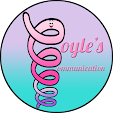Do your language impaired students mix up WH question words? Do they answer them with the wrong type of answer that does not match what you asked? Do they read them incorrectly and mix them all up when they read? Yes? Then keep reading!
I really believe in using pictures to teach the WH question words as if each one is a vocabulary word. I have drawn my own set that I use with my students. These REALLY help them answer and ask questions! It teaches them HOW to comprehend and not just practice doing it (without much success). I wish I had published research to show you, but I don't (yet). I do have my own clinical practice evidence of twenty years that I have spent making this program and the thousands of children it has made a significant difference in their comprehension. The program is grounded in evidence based practice ideas however: it is visual, picture based visual supports, and color coded. Both ideas have lots of research behind them as positive intervention strategies for language impaired children.
Here is how you teach WH words, explicitly, step by step, so that language-impaired children never mix them up again. First you Teach each WH picture cue separately. I have written an in depth therapy program to teach you exactly how to do that with lots of visuals and explicit teaching directions. You can get that in my TpT store, WH QUESTIONS THERAPY PROGRAM, for only 3.00. This will give you all the picture cues and visuals that you can print out and lots of ideas for how to teach them- BUT it is just a framework- it gives you ideas of activities that you can make on your own. If you want things that you can print and see and want to make your own materials, this paper based print option is for you.
If you are more digital and want ready to go materials made for you, My WH Questions Therapy program is now a fully digital, interactive Boom program in seven boom decks: https://wow.boomlearning.com/store/bundle/ZTG8xBcE9EzR8AZmo This comprehensive program will give you everything you need to teach your students how to comprehend WH questions.
BONUS:
Here is a VIDEO of all my WH cues with an added multiple-choice quiz that I made with Edpuzzle.
Ms. Coyle MS CCC/SLP
I really believe in using pictures to teach the WH question words as if each one is a vocabulary word. I have drawn my own set that I use with my students. These REALLY help them answer and ask questions! It teaches them HOW to comprehend and not just practice doing it (without much success). I wish I had published research to show you, but I don't (yet). I do have my own clinical practice evidence of twenty years that I have spent making this program and the thousands of children it has made a significant difference in their comprehension. The program is grounded in evidence based practice ideas however: it is visual, picture based visual supports, and color coded. Both ideas have lots of research behind them as positive intervention strategies for language impaired children.
Here is how you teach WH words, explicitly, step by step, so that language-impaired children never mix them up again. First you Teach each WH picture cue separately. I have written an in depth therapy program to teach you exactly how to do that with lots of visuals and explicit teaching directions. You can get that in my TpT store, WH QUESTIONS THERAPY PROGRAM, for only 3.00. This will give you all the picture cues and visuals that you can print out and lots of ideas for how to teach them- BUT it is just a framework- it gives you ideas of activities that you can make on your own. If you want things that you can print and see and want to make your own materials, this paper based print option is for you.
If you are more digital and want ready to go materials made for you, My WH Questions Therapy program is now a fully digital, interactive Boom program in seven boom decks: https://wow.boomlearning.com/store/bundle/ZTG8xBcE9EzR8AZmo This comprehensive program will give you everything you need to teach your students how to comprehend WH questions.
BONUS:
Here is a VIDEO of all my WH cues with an added multiple-choice quiz that I made with Edpuzzle.
Ms. Coyle MS CCC/SLP
























